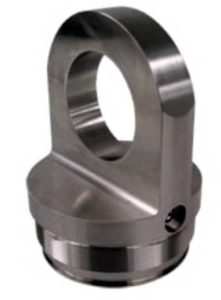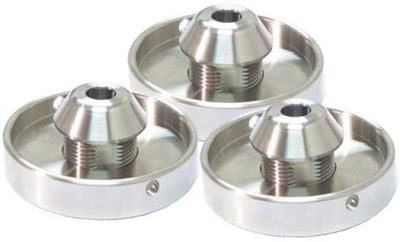Tuoteryhmät
Tuotetunnisteet
Titaaniosien sorvauksen ja jyrsintähinta
Titaaniseoksesta valmistetut rakenneosat (sovellettu: ilmailu, ilma-alus, ar10, lääketieteellinen, vene) käsittelyvaikeuksia, heikko jäykkyys, jne., rakenteellisen käsittelyn muodonmuutostekijät. Työstökoneiden valinnan näkökulmasta, työkalun valinta, tehokas jäähdytys, jne., ehdotetaan ohjausmenetelmää heikosti jäykkien rakenneosien muodonmuutosten käsittelemiseksi. Titaaniseosmateriaaleilla on erinomaiset ominaisuudet, kuten keveys, voimakas, ja korkean lämpötilan kestävyys.
Titaaniseoksesta valmistetut rakenneosat (sovellettu: ilmailu, ilma-alus, ar10, lääketieteellinen, vene) käsittelyvaikeuksia, heikko jäykkyys, jne., rakenteellisen käsittelyn muodonmuutostekijät. Työstökoneiden valinnan näkökulmasta, työkalun valinta, tehokas jäähdytys, jne., ehdotetaan ohjausmenetelmää heikosti jäykkien rakenneosien muodonmuutosten käsittelemiseksi. Titaaniseosmateriaaleilla on erinomaiset ominaisuudet, kuten keveys, voimakas, ja korkean lämpötilan kestävyys. Esimerkiksi, the use of TC18 titanium alloy instead of high-strength structural steel for landing gear can reduce the weight of the aircraft structure by about 15%. Siksi, a large number of new high-strength titanium alloys are used in the main bearing parts of advanced foreign aircraft. Esimerkiksi, titanium alloy accounts for about 21% of the structural materials of the American B-1 bomber; The amount of titanium used in Russia's Il-76 aircraft reached 12.5% of the weight of the airframe structure. From the development trend, the use of titanium alloys in European and American countries is gradually increasing, and it also shows that a large number of titanium alloys are used, especially some new titanium alloys have become the development direction of aviation design.
kuitenkin, most aerospace products use thin-walled parts, which have relatively complex structures and high precision requirements. The rigidity of the parts is poor due to the thin wall. Under the action of cutting force, it is easy to produce bending deformation during processing, and the wall thickness is inconsistent. Nykyisessä, the commonly used method in enterprises is repeated milling in finishing. Due to the low thermal conductivity of titanium alloys, low modulus of elasticity (about 1/2 teräksestä), and high chemical activity, the small margin cannot be milled away at all, and the phenomenon of "less cutting" often occurs. In order to ensure that the size of the part can only be polished by hand, the processing cycle of the part is greatly increased, and the surface of the part may be overburned.
1. Cutting solutions for titanium alloy structural parts
The main factors affecting the processing of titanium alloy weak rigid structures are:
Machine rigidity, työkalun valinta, process parameters, tehokas jäähdytys, jne. In the process of processing, various factors interact, and the accumulation of deformation errors results in poor quality of processed weak rigid structural parts, and processing deformation is difficult to control.
2.1 Selection of machine tools
The rigidity of the machine tool-fixture-tool system should be good, the gap between the various parts of the machine tool should be adjusted well, ja karan säteittäisen ulostulon tulee olla pieni.
2.2 Selection of tools
The increase in cutting productivity is mainly the result of the development and application of new tool materials. In the past few decades, cutting tools have been greatly developed, including cemented carbide coatings, keramiikka, cubic boron nitride, and polycrystalline diamond. These are effective for processing cast iron, steel and superalloys. But none of the tools can improve the machinability of titanium alloys. This is because tool materials for cutting titanium alloys require very important properties. These include:
1) Good heat resistance to resist high stress;
2) Good thermal conductivity to reduce thermal gradient and thermal shock;
3) Good chemical inertness to reduce the tendency of chemical reaction with titanium;
4) Good toughness and fatigue resistance to adapt to the chip segmentation process. In almost all titanium alloy cutting processes, tungsten carbide (WC/co) carbide tools are considered the best. Some tests have shown that the wear rate of all carbide-coated tools is lower than those of uncoated tools.
Although the quality of current ceramic tools has been improved and more and more used to process difficult-to-cut materials, especially those high-temperature alloys (such as nickel-based high-temperature alloys). kuitenkin, due to its poor thermal conductivity, low fracture toughness and reaction with titanium, they did not replace cemented carbide and high-speed steel. Superhard cutting tool materials (cubic boron nitride and polycrystalline diamond) have low wear rates when cutting titanium alloys, and thus show good performance.
The main problem in the milling process of titanium alloy weakly rigid structural parts is the milling deformation of the thin wall. Due to the low modulus of elasticity of titanium alloy and the relatively large cutting force, ohut seinämä muotoutuu helposti jyrsintävoiman vaikutuksesta jyrsintäprosessin aikana. Tuloksena on, että ohuen seinämän todellinen paksuus käsittelyn jälkeen on suurempi kuin teoreettinen paksuus. Ratkaisu tähän ongelmaan on vähentää mahdollisimman paljon voimaa koneistettavaan pintaan kohtisuorasta suunnasta jyrsintäprosessin aikana..
2.3 Leikkausneste titaaniseoksen sorvaukseen
Titaaniseoksella on korkea lujuus, hapettumiskestävyys, korkean lämpötilan kestävyys, jne., samalla kun se täyttää korkean suorituskyvyn vaatimukset, se tuo myös monia ongelmia leikkaamiseen. Titaaniseosta leikattaessa, leikkauslämpötilan alentamiseksi, a large amount of cooling-based cutting fluid should be poured into the cutting area to take away the heat of the cutting edge and flush away the chips to reduce the cutting force. Siksi, the requirements for cutting fluid are large thermal conductivity, large heat capacity, fast flow rate, and large flow rate. The best method of cooling is the high-pressure cooling method, and the cutting fluid flow rate is not less than 15-20L/min. There are three types of cutting fluids generally used, namely water or alkaline solutions, water-based soluble oily solutions and non-water soluble oily solutions.

Tarkat ilmailun titaaniset osat

Precision ar10 2a armament titanium parts

Machining bicycle titanium parts

Precision medical titanium parts
Ota meihin yhteyttä
Sähköpostiasi odotellessa, vastaamme sinulle sisällä 12 tuntia arvokasta tietoa, jota tarvitset.
 English
English العربية
العربية 中文(漢字)
中文(漢字) Čeština
Čeština Dansk
Dansk Nederlands
Nederlands Suomi
Suomi Français
Français Deutsch
Deutsch Italiano
Italiano 日本語
日本語 ಕನ್ನಡ
ಕನ್ನಡ 한국어
한국어 Português
Português Русский
Русский Slovenčina
Slovenčina Español
Español Svenska
Svenska Türkçe
Türkçe






